Where to travel to experience the world of Studio Ghibli composer Joe Hisaishi
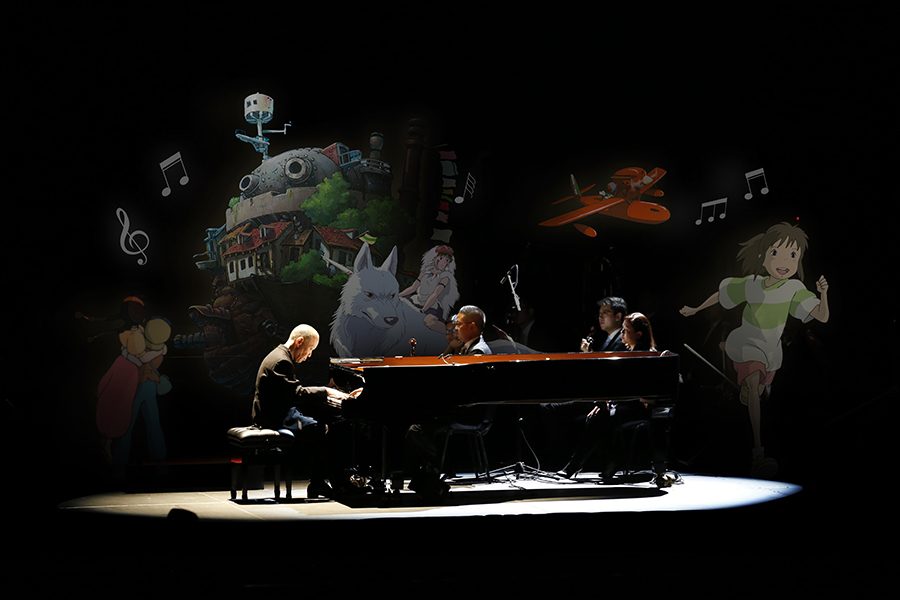
Studio Ghibli films enchant generation after generation. With their dreamy watercolour visions of charming European towns and spiritual Japanese forests, these beautiful animations have a knack for stoking wanderlust.
Studio Ghibli founder Hayao Miyazaki found a longtime partner in composer Joe Hisaishi, whose evocative scores breathe life into these lovingly rendered worlds. Discover the real-life places that inspired both Studio Ghibli’s animators and Hisaishi himself with this musical guide.
Alternatively, you can visit Studio Ghibli’s new theme park near Nagoya – and in Hong Kong, allow Hisaishi to spirit you away as he performs at Cathay Proudly Sponsors: Joe Hisaishi in Concert from 22-24 June at the Hong Kong Cultural Centre.

Credit: Getty Images
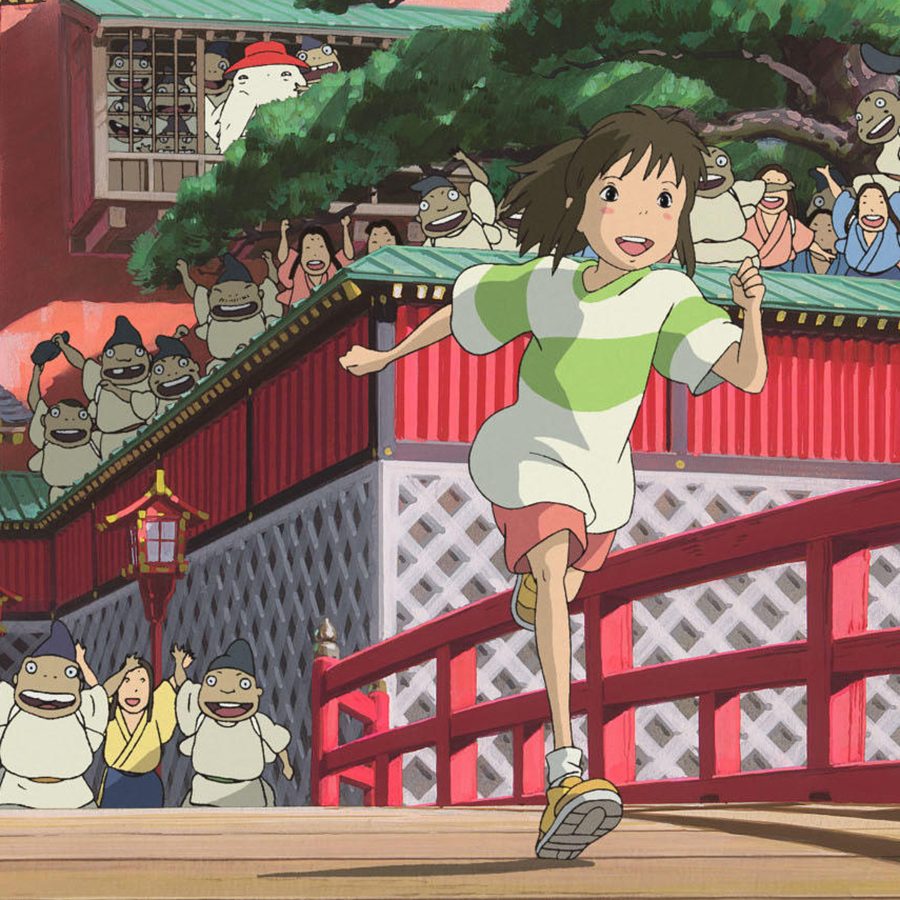
Credit: Studio Ghibli
Spirited Away: Jiufen, Taiwan China
Glowing red lanterns and tinkling piano keys set the tone for The Dragon Boy, a mysterious song which builds to a brassy crescendo with rich wailing violins. As Chihiro, the protagonist of Spirited Away, searches desperately for her parents, she rushes past ghostly figures inside buildings that closely resemble those of Jiufen, a mountainous town an hour outside Taipei.
While Miyazaki denies being inspired by Jiufen, his fictional spa town bears more than a passing resemblance. It’s no surprise that this sleepy locale has become a go-to spot for Studio Ghibli fans, captivated by its magical setting and Hisaishi’s evocative soundtrack.
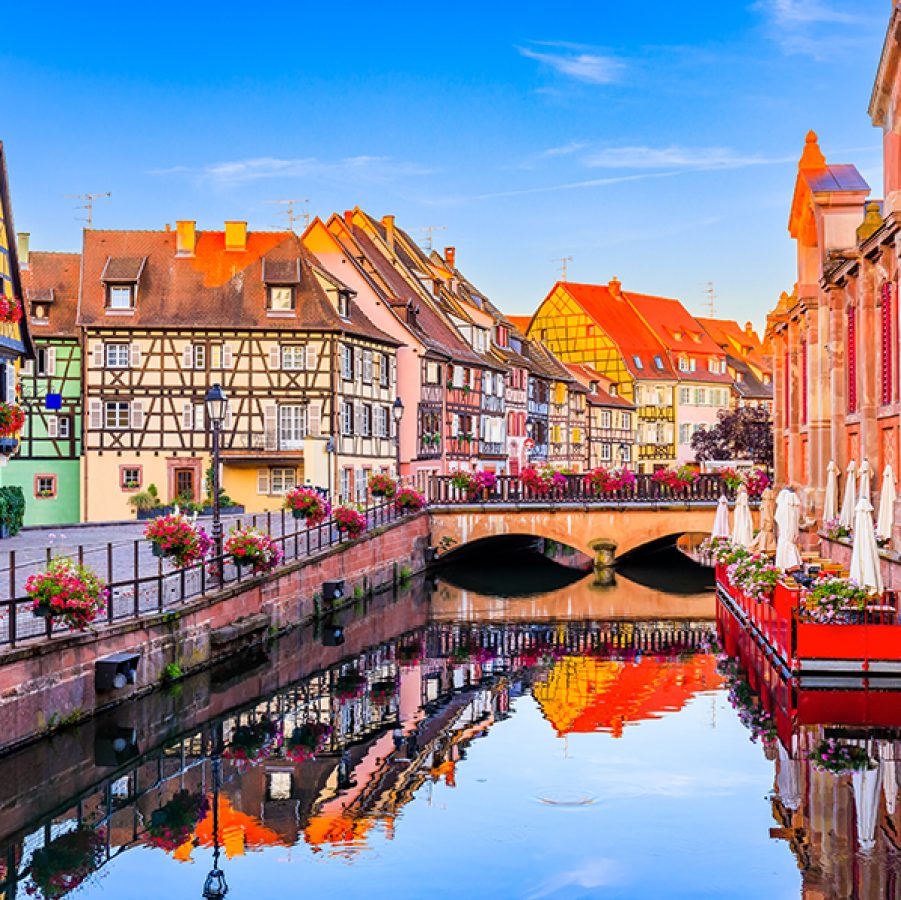
Credit: Getty Images
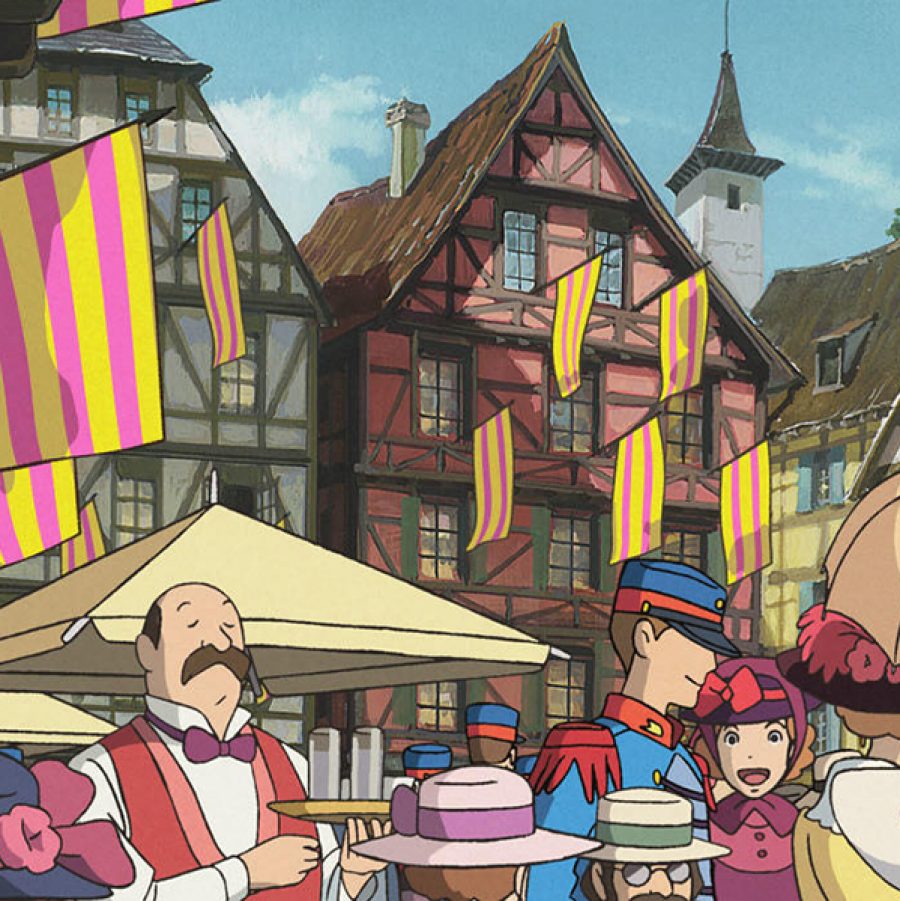
Credit: Studio Ghibli
Howl’s Moving Castle: Alsace, France
As the waltzing notes of Merry Go Round of Life play, a young couple walks down bustling cobblestone streets and between colourful half-timbered houses in Howl’s Moving Castle. This utterly romantic song is one of Hisaishi’s best, making it easy to fall in love with the vibrant landscapes of the 2004 film – especially as the drums pick up and the magician Howl gently floats the young hatmaker Sophie onto a balcony.
If you want to live in that universe for a little while, head to Colmar in Alsace, France, where Miyazaki sent his animation team to study its scenery and bring the film’s vivid scenes to life. With its rainbow hues and charming architecture, the Alsatian town feels as though it’s been plucked right out of a fairytale.

Credit: Getty Images
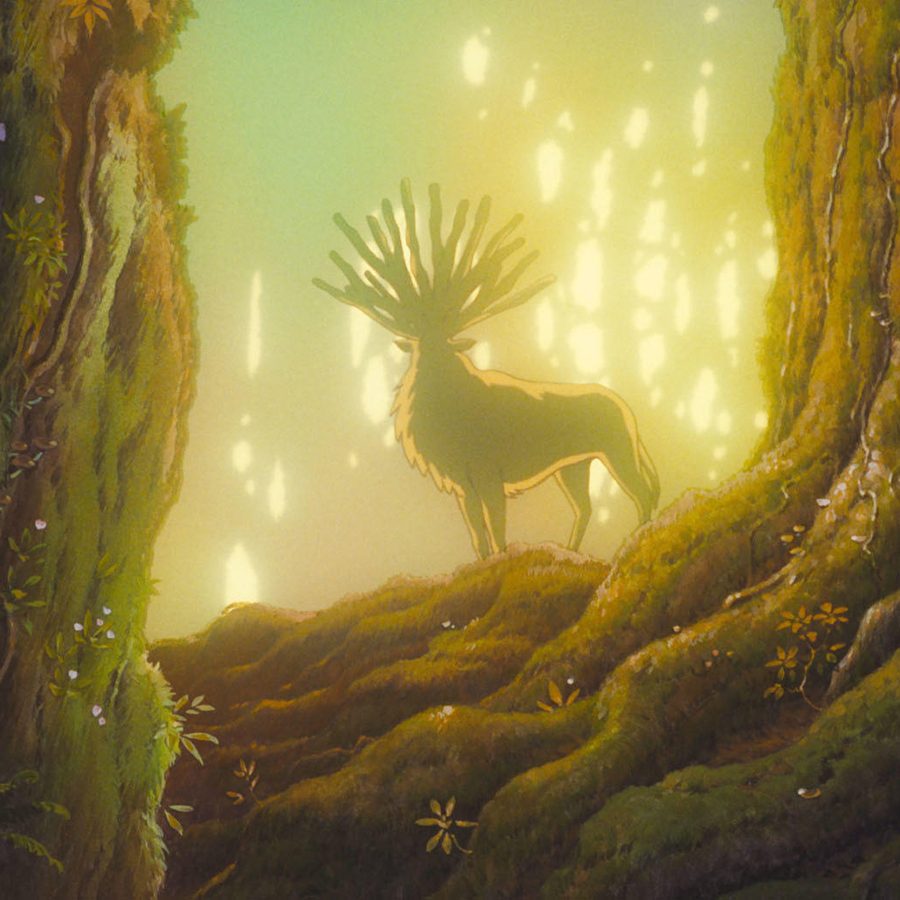
Credit: Studio Ghibli
Princess Mononoke: Yakushima, Japan
Ashitaka and San is one of Hisaishi’s most uplifting songs and it’s a fitting end to eco-epic Princess Mononoke. As it plays, the film’s ravaged woodlands are magically restored to their former glory. Bright, reedy oboe notes sing as balance returns; green shoots rise up and wildflowers bloom as choral voices join in a tear-jerking harmony.
The film’s mossy green forests are based on Shiratani Unsuikyo Ravine on the Unesco-recognised Japanese island of Yakushima. Filled with towering ancient Japanese cedars, the forest exudes a surreal beauty that inspired Mononoke’s lead animator Oga Kazuo after he spent time there. It’s the most stunning piece of advertising for Yakushima, and it continues to be a popular spot for Ghibli and hiking fanatics alike.
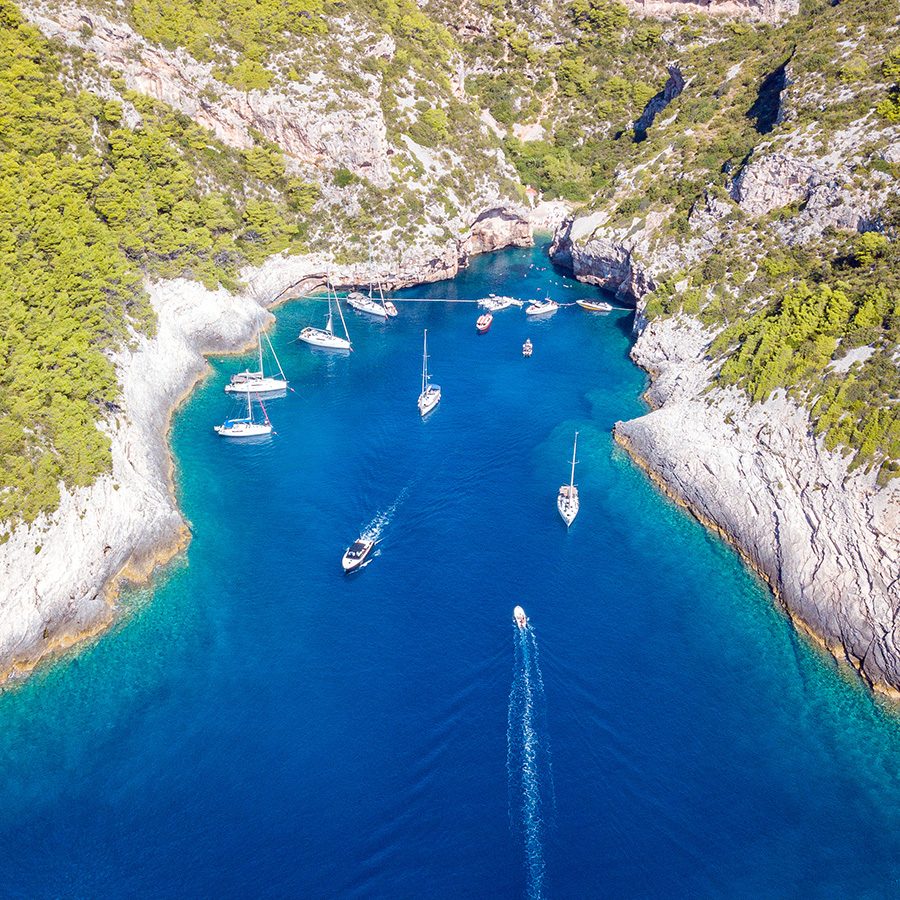
Credit: Getty Images

Credit: Studio Ghibli
Porco Rosso: The Adriatic Sea
The jazzy melancholy of The Bygone Days introduces one of Porco Rosso’s more introspective moments, when the film’s bounty hunter protagonist recalls his time as a fighter pilot soaring over the Adriatic Sea during World War I. While a saxophone blows, animators capture the neon blue of the region’s waters as Porco flies past on his aeroplane, pursued by enemies.
The bright, crisp landscapes of Porco Rosso, combined with one of Hisaishi’s sultrier soundtracks, make it impossible not to fall in love with the film’s setting. It’s easy to see the locations that inspired it, from the red roofs of Croatia (also the location of Stiniva Cove, Porco’s hideout) to the canals of Milan.
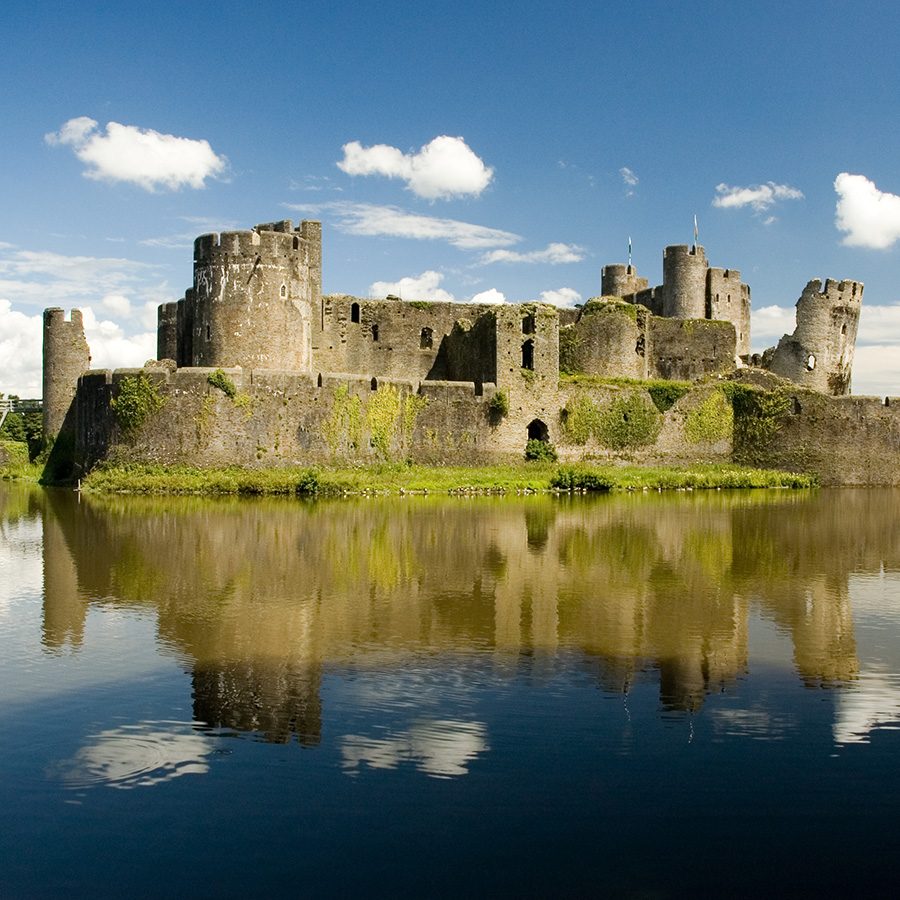
Credit: Getty Images
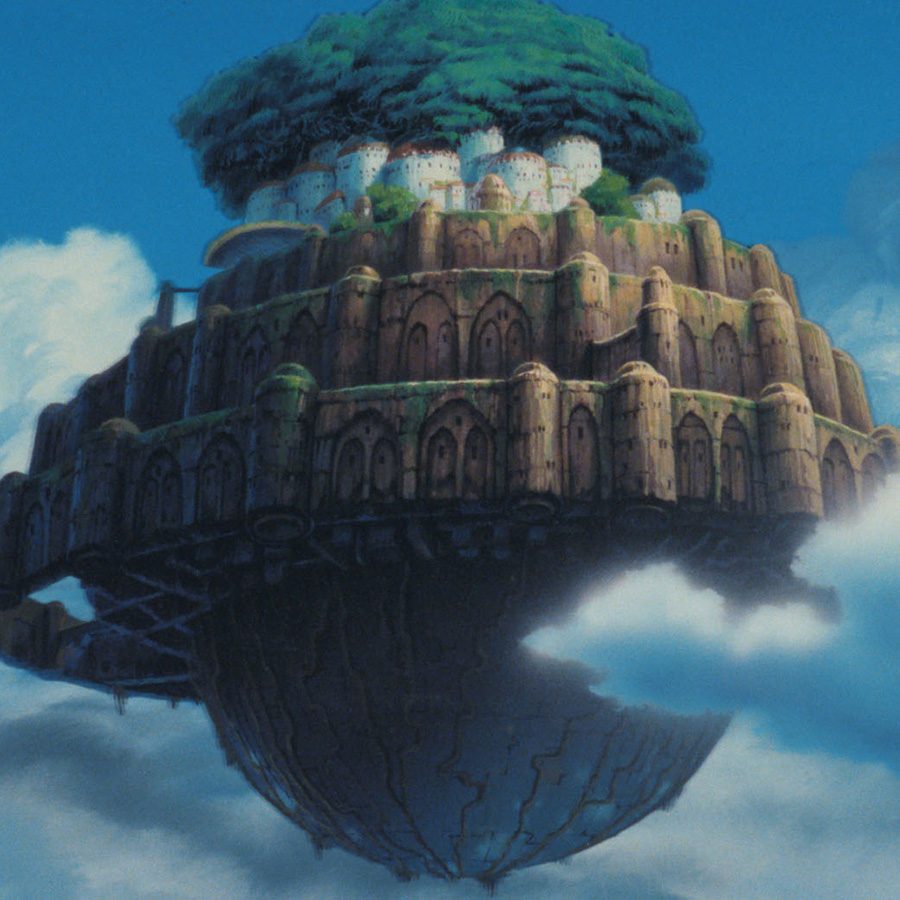
Credit: Studio Ghibli
Castle in the Sky: Caerphilly Castle, Wales
As Castle in the Sky begins, the titular floating fortress appears to a crash of cymbals and soaring violins in The Girl who Fell from the Sky. The castle, which is more than deserving of its rousing orchestral introduction, is said to be based upon medieval Welsh castles such as Caerphilly and Powis.
As the song softens, the focus moves to plucky protagonist Sheeta as she falls out of an airship and floats towards a humble mining town below. Miyazaki, who visited the Welsh Rhondda Valley for research during the miners’ strikes of the 1980s, was deeply moved by the setting and incorporated it into the film. While it isn’t the most colourful of Studio Ghibli’s film locations, there’s a rugged charm to the tightly-knit terraced homes nonetheless.
More inspiration
- China – the Chinese Mainland, Hong Kong SAR, Macao SAR and Taiwan Region
- Hong Kong SAR - English
- Chinese Mainland (China) - English
- Taiwan, China - English
- 香港特別行政區 - 繁體中文
- 中国內地 - 简体中文
- 中國台灣 - 繁體中文
- Africa
- South Africa - English
- Americas
- Canada - English
- Canada - Français
- United States - English
- Asia
- Bangladesh - English
- Korea - English
- Singapore - English
- Cambodia - English
- 한국 - 한국어
- Sri Lanka - English
- India - English
- Malaysia - English
- Thailand - English
- Indonesia - English
- Maldives - English
- ประเทศไทย - ภาษาไทย
- Indonesia - Bahasa Indonesia
- Myanmar - English
- Vietnam - English
- Japan - English
- Nepal - English
- Việt Nam - tiếng Việt
- 日本 - 日本語
- Philippines - English
- Australasia
- Australia - English
- New Zealand - English








